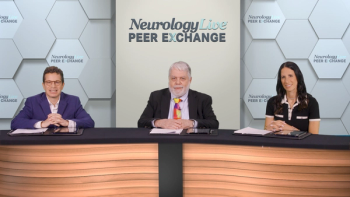
Use of Narcolepsy Treatments in Different Patients: Part 2
Drs Thorpy, Bogan, Doghramji, and Kushida discuss combination therapy and patients with complex narcoleptic disease.
Episodes in this series

This is a video synopsis/summary of a panel discussion involving Michael Thorpy, MD; Karl Doghramji, MD, FAASM, DFAPA; Clete Kushida, MD, PhD; and Richard K Bogan, MD.
In the discussed conversation, various medications for managing daytime sleepiness in narcolepsy are explored. The conversation primarily revolves around the use of medications such as pitolisant, modafinil, solriamfetol, methylphenidate, and amphetamines.
Pitolisant is considered as an option for individuals experiencing mild to moderate daytime sleepiness. Modafinil and solriamfetol are also mentioned as potential treatments. If residual sleepiness persists, combining medications or adding methylphenidate or amphetamines may be considered, especially for more severe cases. Solriamfetol stands out as it provides all-day relief from daytime sleepiness and has low potential for drug interactions.
However, solriamfetol does not address cataplexy, a symptom often associated with narcolepsy. Therefore, if cataplexy is present or develops, alternative treatments may be necessary. Pitolisant, while effective for daytime sleepiness, is not an anti-cataplectic medication.
One notable advantage of pitolisant is its renal excretion, reducing the risk of interactions with other medications metabolized in the liver. However, caution is advised in patients with cardiovascular issues due to potential cardiovascular effects. Rescue doses of immediate-release medication may be used to alleviate peak sleepiness periods, such as mid-afternoon.
Monitoring blood pressure and heart rate is crucial when administering medications like solriamfetol, although significant changes in these parameters are not commonly observed. Overall, the conversation emphasizes the importance of tailoring medication choices to individual patient needs, considering both efficacy and potential side effects.
Video synopsis is AI-generated and reviewed by NeurologyLive editorial staff.
Newsletter
Keep your finger on the pulse of neurology—subscribe to NeurologyLive for expert interviews, new data, and breakthrough treatment updates.






















